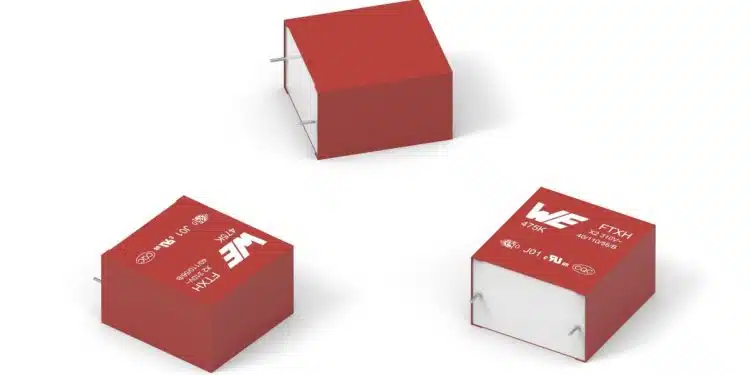With its WCAP-FTXH THB X2 series, Würth Elektronik introduces its new family of safety film capacitors for interference suppression in mains filters.
All articles in this series are ENEC 10, cULus, and CQC certified and belong to the X2 safety class capacitors according to IEC 60384-14.
What makes the capacitors – designed for 310 V rated voltage – particularly special is their resistance to heat and moisture.
They therefore pass a 1000-hour test at 85°C and 85% relative humidity with the rated voltage applied. Their operating temperature range extends from -40 to +110°C.
The WCAP-FTXH family of capacitors has self-healing properties thanks to its polypropylene dielectric: If a short circuit occurs in the component, it leads to the elimination of its own cause by vaporizing the defect, thus restoring an intact dielectric.
The film capacitors are available in 21 variants with different capacitance values (from 33 nF to 10 µF), voltage ramp-up rates, and insulation resistances. The components have different sizes depending on their values, and a pin pitch from 15 mm to 37.5 mm.
Features
- Product series for interference suppression
- For harsh enviromental conditions (THB: Temperature Humidity Bias)
- THB Test: 1000 h @ 85°C @ 85% r.h. with rated voltage applied
- Self-healing properties
- Certificates: ENEC 10 by VDE, cULus, CQC
- Safety class: X2
- Dielectric: Polypropylene
- Capacitance range: 33 nF ‒ 10 µF
- Voltage range (UR): 310 V(AC)
Applications
- Safety applications
- Mains Voltage Filter
- Interference suppression
webinar reference: Effects of Harsh Environmental Conditions on Film Capacitors






























